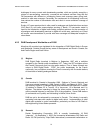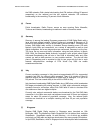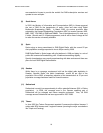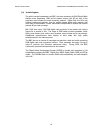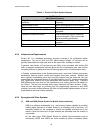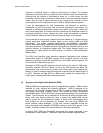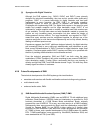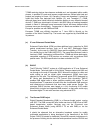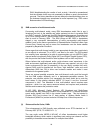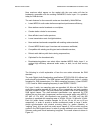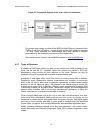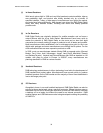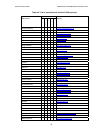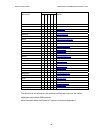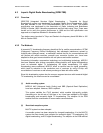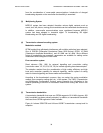DIGITAL RADIO GUIDE TERRESTRIAL TRANSMISSION SYSTEMS - DAB
29
DAB. Notwithstanding the results of such a study, it should be remembered
that the ultimate choice may not necessarily be taken on purely the technical
grounds. The history teaches us that not always the best technology wins, as
the business interests may sometimes be more important (e.g., VHS versus
Betamax about VCR technology).
(2) DAB as carrier of multichannel audio
Concerning multi-channel audio, many EBU broadcasters would like to see it
introduced not only in the satellite and cable systems but also in terrestrial DAB
and DVB-T systems. To this end, the EBU Broadcast Management Committee set
up a Focus Group B/MCAT (Multi-Channel Audio Transmission) which is due to
start its work in February 2004 . The EBU Village at IBC 2003 in Amsterdam
staged a very successful demonstration of some pre-recorded multi-channel
material (such as the famous production of Österreichischer Rundfunk's New Year
Concert from Vienna) as well as some live broadcasts over the Astra satellite
prepared by Bayerischer Rundfunk.
Some argue that multi-channel audio is more appropriate for television, particularly
as an adjunct to enhanced TV or HDTV, and less so for radio. The DVB system
has recently been extended to be able to accommodate not only MPEG-2 multi-
channel audio but optionally Dolby Digital (AC3) and Digital Theatre System (DTS),
with the proviso that further hooks for other systems such as AAC may follow.
Others believe that multi-channel audio could enhance users' experience in the
radio environment significantly and make DAB even more popular, not only in the
home environment but also (or especially) in the car. Many consider that multi-
channel DAB could be branded as the future "high definition" radio and could
differentiate DAB from FM to drive new business models and make it more
attractive for the general public.
There are several possible scenarios how multi-channel audio could be brought
into the DAB system efficiently and in a backwards-compatible manner. For
example, one possible solution (not necessarily the best) would be to code the
basic stereo in the existing standard MPEG 1/2 Layer II and the "surround"
component in AAC. The downside is that multi-channel sound requires more
spectrum - which is a very scarce resource indeed, and requires new production
facilities and increases the production costs.
At IBC 2003, Microsoft, Capital Radioplc, NTL Broadcast and RadioScape
announced that they planned to conduct a trial broadcast of 5.1-channel surround
sound audio signals over DAB in the central London area. This trial started in
October 2003 and involves live IP data casting of Widows Media Audio 9
Professional (WMA Pro) content coded at 128 kbps over L-Band frequencies.
(3) Enhanced Audio Codec, DAB+
This enhancement to DAB formally was published as an ETSI standard on 12
February 2007 (ETSI, TS 102563 V1.1.1).
The new audio codec MPEG-4 HE-AAC v2 offers broadcasters much higher
bandwidth efficiency which results in significant cost savings per channel and the
possibility to broadcast more channels in a multiplex than before.



